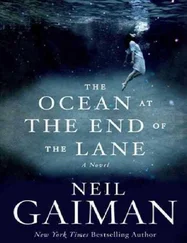Peter Pišťanek - The End of Freddy
Здесь есть возможность читать онлайн «Peter Pišťanek - The End of Freddy» весь текст электронной книги совершенно бесплатно (целиком полную версию без сокращений). В некоторых случаях можно слушать аудио, скачать через торрент в формате fb2 и присутствует краткое содержание. Год выпуска: 2008, Издательство: Garnett Press, Жанр: Современная проза, на английском языке. Описание произведения, (предисловие) а так же отзывы посетителей доступны на портале библиотеки ЛибКат.
- Название:The End of Freddy
- Автор:
- Издательство:Garnett Press
- Жанр:
- Год:2008
- ISBN:нет данных
- Рейтинг книги:4 / 5. Голосов: 1
-
Избранное:Добавить в избранное
- Отзывы:
-
Ваша оценка:
- 80
- 1
- 2
- 3
- 4
- 5
The End of Freddy: краткое содержание, описание и аннотация
Предлагаем к чтению аннотацию, описание, краткое содержание или предисловие (зависит от того, что написал сам автор книги «The End of Freddy»). Если вы не нашли необходимую информацию о книге — напишите в комментариях, мы постараемся отыскать её.
The End of Freddy — читать онлайн бесплатно полную книгу (весь текст) целиком
Ниже представлен текст книги, разбитый по страницам. Система сохранения места последней прочитанной страницы, позволяет с удобством читать онлайн бесплатно книгу «The End of Freddy», без необходимости каждый раз заново искать на чём Вы остановились. Поставьте закладку, и сможете в любой момент перейти на страницу, на которой закончили чтение.
Интервал:
Закладка:
Sosna detects a muffled protest.
“I’ll tell you why I insist on it,” he says. “I won’t deny that all your scores are being kept. You are constantly being evaluated and awarded points, even as you sleep. The top two of your group will be submarine captains. The others will be warrant officers and chief engineers. The only secure posts in your group are those of ship’s medical doctors lieutenant Dr Ondriáš and sub-lieutenant Dr Svatý. Nobody gets pally with the submarine captain. So far we don’t know which of you will become one. That’s why we’ll address each other formally, so that it won’t be hard to switch later. This is an order. You’ll get used to it. Well, that should be all for now: we’ll see each other in specialised training. Captain Macháček, carry on!”
After the drill session, the unit goes to a classroom in the headquarters building. Captain Dr Jíra, a military historian, is already waiting for them.
“Although we Czechs have no sea of our own, we do have a rich submarine tradition,” Dr. Jíra starts his first lecture. “In the Austro-Hungarian naval fleet during World War One, the Czechs formed the basis of the ships’ qualified crew. That applied to submarines as well. A long time has passed since then, but it’s a tradition the Czech navy will build on.”
Then follows a factual history of submarines as weapons, with examples of combat missions.
Some of the audience can’t bear it and fall into a deep sleep. Captain Jíra ignores them. He concentrates on those who listen with interest.
Then the future naval officers change into service uniform and are mustered for lunch, whose quality pleasantly surprises Kubeš.
After lunch there’s an hour’s free time. Most trainees spend it lying on their bunks. The free time is very short. As soon as the future naval officers fall asleep, a warrant officer is there to call them to muster. Their garb is workmen’s overalls. Sosna, also dressed in black military overalls, is awaiting them. He leads them through the pine wood to a big hangar.
“Gentlemen, what you’re about to see inside will probably surprise you,” he says before entering the hangar. “You’ll spend the most of your training time here. Everything else, drills, physical training and theory is grey stuff. Eternally green is the tree of praxis.”
“And your brain,” mumbles Libáň.
Sosna slides the hangar door open and the trainees catch the breathtaking sight of a real submarine, loftily enthroned on steel supports.
“Has anyone ever been in a submarine?” Sosna wants to know.
A few hands come up. “Where was it, Mr Rajter?” Sosna asks.
“In Odessa, Vice Admiral,” says Rajter. “In the Black Sea fleet museum. They have a Shch- class submarine at anchor.”
“And you, Mr Mikuš?” Sosna enquires.
Kubeš can’t help admiring the man’s phenomenal memory.
“In Cuba,” says Mikuš. “In a Cuban submarine. On a friendly visit.”
The men break out laughing.
“Well, yes,” says Sosna. “Cuba. Havana Club. Well, this is the German class U-XXI, one of the last models before the end of the war. Gentlemen, this is a submarine that could have given the Nazis victory in the Atlantic, if it had appeared two years earlier. Its original designation is U-XXI, but for Czech Navy purposes it is designated P-45/M. ‘P’ stands for ponorka (submarine), 1945 the year it was produced, and ‘M’ modification of the vessel. This one is of course a simulator. All controls and regulators go via an interface to a computer so we can simulate every kind of situation.”
Sosna walks round the vessel, which looks like a beached whale.
“The Czech Navy has acquired two seaworthy submarines of this type,” he says. “They are now undergoing a full refit in dry dock in Latvia. By the way, the P-45/M was the world’s first real combat submarine. That means this vessel could move under water for a long time, and not just keep that option for times of danger. It was more comfortable for the crew than previous submarines. The interior was quieter, and there’s even a refrigerator on board for food, a shower cubicle, and other features. You’ll see for yourself. Of course, most interior fittings for the crew have been replaced by modern ones. So, anyone hoping to see a fridge of the Thousand Year Reich period is bound to be disappointed. And now, please, follow me.”
Sosna climbs up to the platform round the submarine roughly at deck height. He nimbly climbs into the conning tower and slips into the opening.
The trainees follow him one by one.
The twenty future submariners have to spread out in a narrow space along the vessel. Luckily, Sosna’s voice carries well through the submarine.
“We’re now in the submarine’s command centre,” Sosna points around himself. “Above all, this is the captain’s, duty officers’ and first mate’s work space. Could anyone tell me in one word what is typical of any submarine?”
The trainees are quiet.
“It’s the symbol of a submarine, really,” Sosna hints. “A symbol of its deviousness, if you like. Does anyone know?”
“Torpedoes,” Libáň says confidently.
“No,” Sosna smiles. “Destroyers have torpedoes, too, so do torpedo boats and aeroplanes. Any other suggestions?”
“A periscope?” Kubeš asks, talking to himself.
“Louder, please!” Sosna shouts. “Yes, a periscope! You know, the submarine is the most treacherous of all warfare devices. And a periscope is a submarine’s eyesight. A submarine can see, but stays mostly unseen. Notice that when you see a film and the director wants to suggest action in a submarine, they show a man with a periscope.
Sosna pushes a lever and a shiny column in the middle of the bridge slides up with smooth buzz. Sosna pulls its handles out with a snap and presses his eyes to the eyepieces, which have a black spongy frame.
“Take a look,” he tells the trainees.
Nobody can resist the chance to look through a periscope.
“It’s dark now, of course,” says Sosna. “In training you’ll see enemy ships on its computer screen. Now follow me. We’ll go from front to back.”
And so the trainees start at the very front. They learn that the torpedo section of the P-45/M submarine is equipped with a hydraulic self-arming mechanism which can arm all six torpedo tubes in about ten minutes, less time than a VIIC class, the commonest German submarine, took to arm a single tube.
“Of course, this information is irrelevant to you,” says Sosna. “On your combat mission you’ll be carrying something else in this section.”
Touring the submarine takes two hours: from the torpedo section to the crew quarters and mess, the officers’ quarters and mess, the captain’s cabin, the radar and sonar stations, the command station, the non-commissioned officers’ quarters, mess, kitchen, washroom and lavatory (“This is a simulator, gentlemen, please don’t use the lavatory.”) and then the diesel-electric engine room, and the rear torpedo section.
“Compared to submarines of the earlier class, P-45/M has triple-capacity electric batteries, which give it an enormous underwater radius of action,” says Sosna. “A snorkel allows it to recharge the batteries under water. It needs at most three to five hours to recharge. Travelling at a speed of four to eight knots, it needs charging once every two to three days. This makes the vessel far less vulnerable. Well, that’ll do for today, gentlemen.”
As they leave the submarine, the bright light surprises Kubeš. The submarine was dim, even though the light was on and all the service openings were wide open for ventilation.
Back in their quarters, the trainees change into service uniforms and muster for dinner. When they get back from dinner, they have the order of the day. After that is free time. They can leave the barracks. This, however, is only a theoretical opportunity that nobody takes. They all collapse onto their bunks and soon the barrack echoes with rhythmical breathing.
Читать дальшеИнтервал:
Закладка:
Похожие книги на «The End of Freddy»
Представляем Вашему вниманию похожие книги на «The End of Freddy» списком для выбора. Мы отобрали схожую по названию и смыслу литературу в надежде предоставить читателям больше вариантов отыскать новые, интересные, ещё непрочитанные произведения.
Обсуждение, отзывы о книге «The End of Freddy» и просто собственные мнения читателей. Оставьте ваши комментарии, напишите, что Вы думаете о произведении, его смысле или главных героях. Укажите что конкретно понравилось, а что нет, и почему Вы так считаете.








